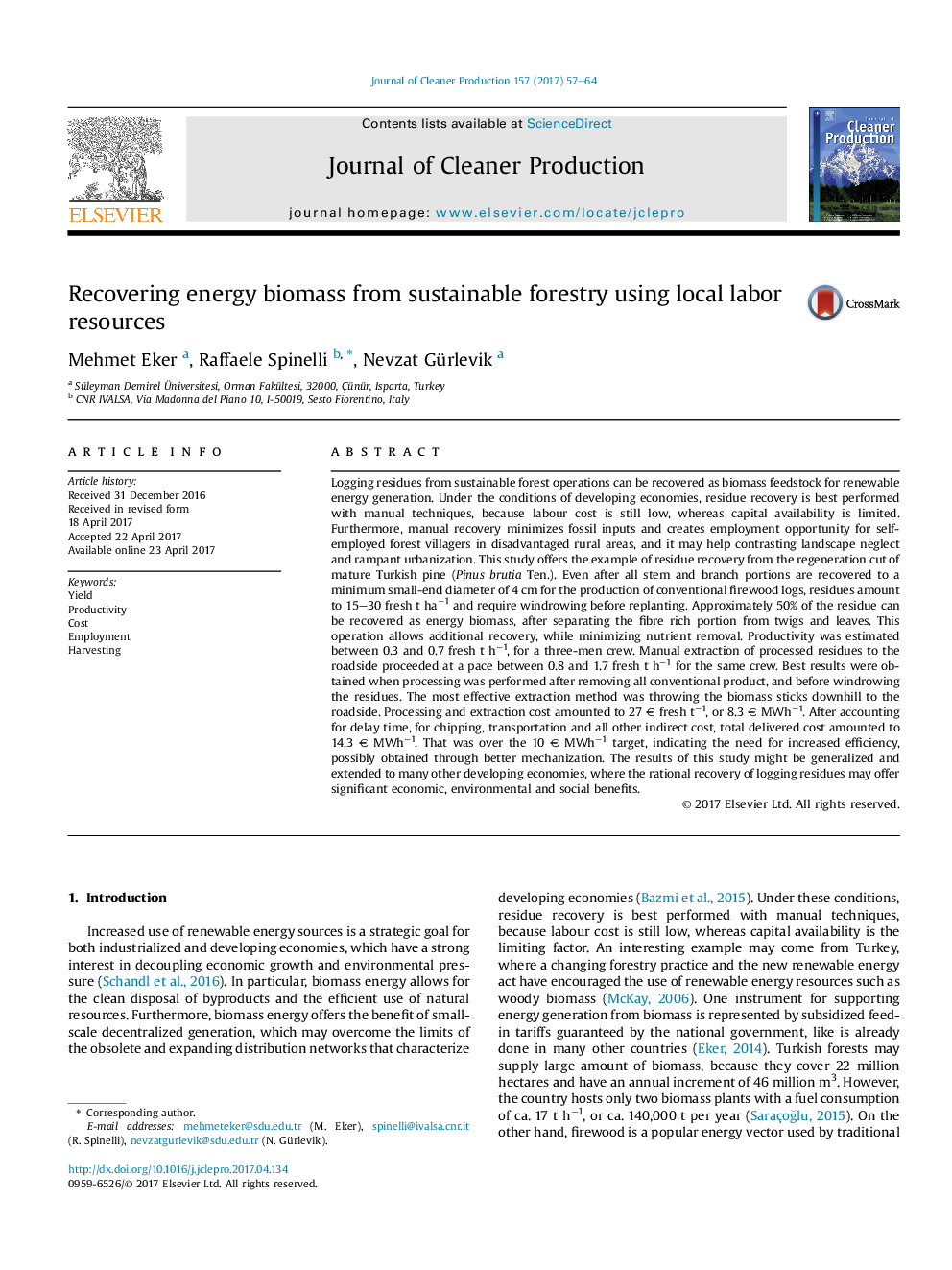| کد مقاله | کد نشریه | سال انتشار | مقاله انگلیسی | نسخه تمام متن |
|---|---|---|---|---|
| 5481163 | 1522097 | 2017 | 8 صفحه PDF | دانلود رایگان |
عنوان انگلیسی مقاله ISI
Recovering energy biomass from sustainable forestry using local labor resources
ترجمه فارسی عنوان
بازیافت زیست توده انرژی از جنگل پایدار با استفاده از منابع کارگری محلی
دانلود مقاله + سفارش ترجمه
دانلود مقاله ISI انگلیسی
رایگان برای ایرانیان
کلمات کلیدی
بازده، بهره وری، هزینه، استخدام، جمع آوری
موضوعات مرتبط
مهندسی و علوم پایه
مهندسی انرژی
انرژی های تجدید پذیر، توسعه پایدار و محیط زیست
چکیده انگلیسی
Logging residues from sustainable forest operations can be recovered as biomass feedstock for renewable energy generation. Under the conditions of developing economies, residue recovery is best performed with manual techniques, because labour cost is still low, whereas capital availability is limited. Furthermore, manual recovery minimizes fossil inputs and creates employment opportunity for self-employed forest villagers in disadvantaged rural areas, and it may help contrasting landscape neglect and rampant urbanization. This study offers the example of residue recovery from the regeneration cut of mature Turkish pine (Pinus brutia Ten.). Even after all stem and branch portions are recovered to a minimum small-end diameter of 4 cm for the production of conventional firewood logs, residues amount to 15-30 fresh t haâ1 and require windrowing before replanting. Approximately 50% of the residue can be recovered as energy biomass, after separating the fibre rich portion from twigs and leaves. This operation allows additional recovery, while minimizing nutrient removal. Productivity was estimated between 0.3 and 0.7 fresh t hâ1, for a three-men crew. Manual extraction of processed residues to the roadside proceeded at a pace between 0.8 and 1.7 fresh t hâ1 for the same crew. Best results were obtained when processing was performed after removing all conventional product, and before windrowing the residues. The most effective extraction method was throwing the biomass sticks downhill to the roadside. Processing and extraction cost amounted to 27 â¬Â fresh tâ1, or 8.3 â¬Â MWhâ1. After accounting for delay time, for chipping, transportation and all other indirect cost, total delivered cost amounted to 14.3 â¬Â MWhâ1. That was over the 10 â¬Â MWhâ1 target, indicating the need for increased efficiency, possibly obtained through better mechanization. The results of this study might be generalized and extended to many other developing economies, where the rational recovery of logging residues may offer significant economic, environmental and social benefits.
ناشر
Database: Elsevier - ScienceDirect (ساینس دایرکت)
Journal: Journal of Cleaner Production - Volume 157, 20 July 2017, Pages 57-64
Journal: Journal of Cleaner Production - Volume 157, 20 July 2017, Pages 57-64
نویسندگان
Mehmet Eker, Raffaele Spinelli, Nevzat Gürlevik,
